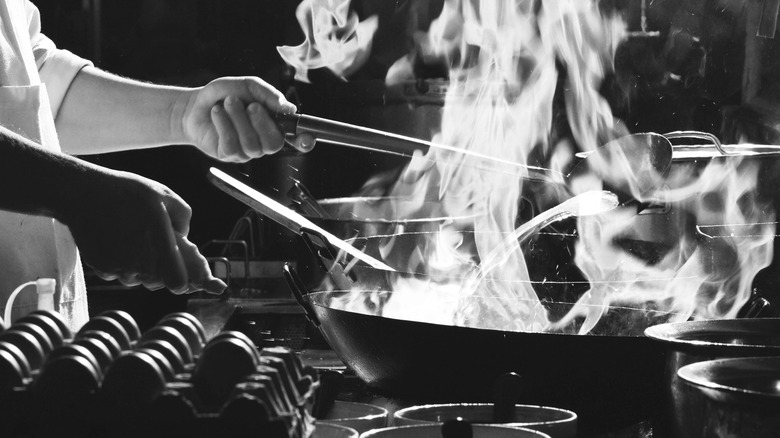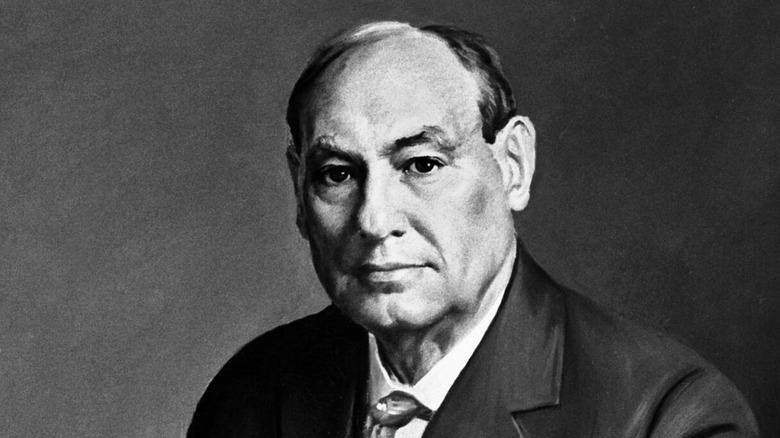'The Poison Squad': When The USDA Hired People To Get Sick From Preservatives
When it comes to food safety in the United States, many may think of Upton Sinclair as the original pioneer for reform at the turn of the 20th century. However, while his work did bring about important change, specifically within the meat industry, he was not alone. At the same time, in the first years of the 1900s, a man who had already spent almost two decades working to make America's food healthier from within the Department of Agriculture came to the forefront when he formed the group that would come to be known as "The Poison Squad."
Dr. Harvey Wiley, who headed the Division of Chemistry of the United States Department of Agriculture starting in 1883, was an ardent opponent of food preservatives. In a time when formaldehyde was used to preserve milk, dyed sawdust was passed off as coffee, and brick dust was sold in place of spices, Wiley actively worked to improve the safety of the food supply by repeatedly proposing legislation to Congress. His proposals continuously failed thanks to the lobbyists of the time.
Then, in 1902, with $5,000 (funded by Congress) and a group of 12 healthy adult male volunteers, Wiley started the experiment that would eventually lead to the first piece of food safety-related legislation in the United States.
What was The Poison Squad?
Wiley's experiment enlisted volunteers willing to consume food tainted with ever-increasing quantities of preservatives like formaldehyde, borax, salicylic acid, sodium benzoate, saccharin, and copper salts. The group of 12 males was comprised primarily of Wiley's colleagues at the Department of Agriculture, who swore to eat only the food that was prepared for them by a cook that Wiley enlisted for the project.
The project initially was nameless, but Wiley eventually called it "the hygienic table trials." However, once the media got wind of the experiment, "The Poison Squad" became the common name used to reference the trials.
That title was accurate. Each day, the volunteers would settle in for their meals, periodically taking pills filled with the various chemicals that Wiley was testing — the same ones that were already being used as preservatives in food throughout the country. While the men were under the care of the Public Health & Marine Hospital Service, receiving exams each week, it was quickly evident that Wiley's suspicions about the effects of the chemicals on humans were accurate.
What happened?
The volunteers for "The Poison Squad" demonstrated a wide range of reactions to consuming the chemicals, from short-term effects like stomach cramps, dizziness, headaches, and sore throats to longer-term issues like lower appetite and loss of weight. Some trials were cut short when the men became overly ill.
Wiley initially tried to keep the trials quiet, but reporters were adamant about sharing the stories of "The Poison Squad". Instead of resisting, Wiley gave in and actively worked to share information with news sources who eagerly reported to readers.
The spread of information about the work of "The Poison Squad" and the harmful effects of the chemicals they tested helped not only raise awareness but turn the tide of public opinion. Groups like the Federated Women's Club began asking for action, and some food producers voluntarily began to remove the substances from their products.
Then, in June 1906, Wiley was finally victorious. Theodore Roosevelt signed the Pure Foods and Drugs Act, legislation that was authored primarily by Wiley himself. The passage of the act marked the inception of the Food and Drug Administration (FDA), which Wiley would oversee for approximately six years, earning him the title that many refer to him by — the father of the FDA.


